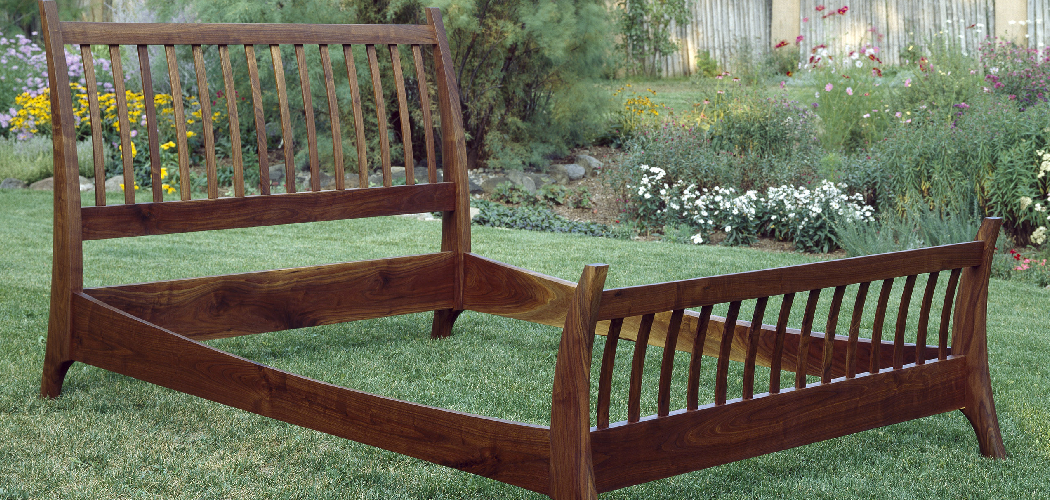If you’ve ever spent a night trying to sleep on a broken bed frame rail, you know just how disruptive it can be – not only to your regular rest routine but also to the structural integrity of your entire bed. Whether the wood has cracked or been damaged due to mishandling, fixing a wooden bed frame rail can seem like an intimidating task.
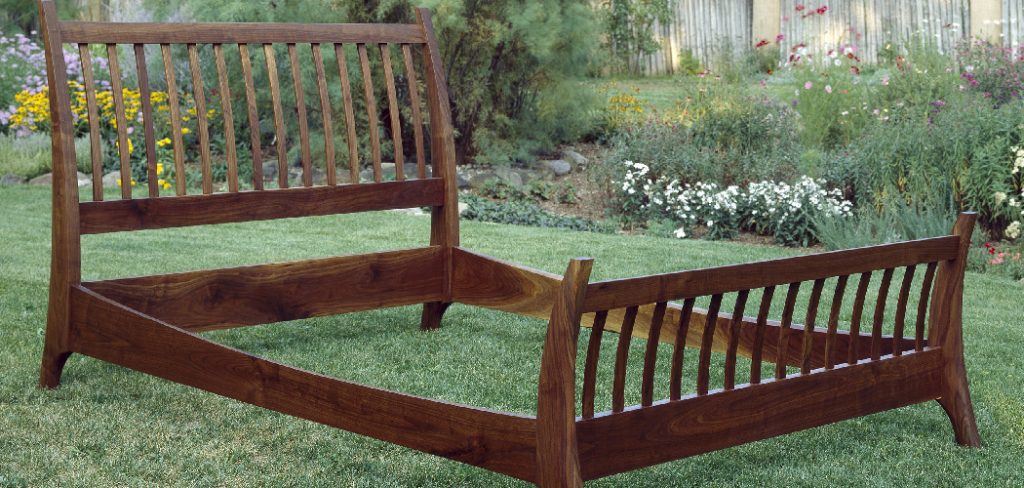
However, with some basic DIY knowledge and tools at hand, it’s possible to repair many wooden bed frame rails in no time. In this blog post, we’ll walk you through the steps on how to fix a wooden bed frame rail necessary for repairing a wooden bed frame rail so that you can get back into your comfortable sleeping position as quickly as possible!
The Bright Sides of Having a Wooden Bed Frame Rail
1. Durability
Wooden bed frame rails are incredibly strong and durable, so they’re much less likely to break than metal or plastic railings. Additionally, wooden rails are often more visually appealing and can add a touch of classic charm to your bedroom décor.
2. Easily Repaired/Replaced
Unlike metal bed frames, you don’t need special tools or welding to fix a wooden bed frame rail. With just a few basic materials and some elbow grease, you can make quick repairs or replace the entire rail in a matter of minutes. It is a great time saver!
Required Items
- Sandpaper
- Wood Glue
- Hammer
- Nails/Screws
8 Tips on How to Fix a Wooden Bed Frame Rail
1. Inspect the Damage
Before you can begin repairs, it’s important to identify where the rail has been damaged and how bad the damage is. If there are cracks or breaks in the wood, you’ll want to take note of their size and location before moving on to any other repairs.
2. Clean and Sand the Wood
Once you’ve identified where the damage is located, use a piece of sandpaper to smooth out any rough edges and remove any splinters from the wood. This will give your glue something to adhere to when it comes time for repairs.
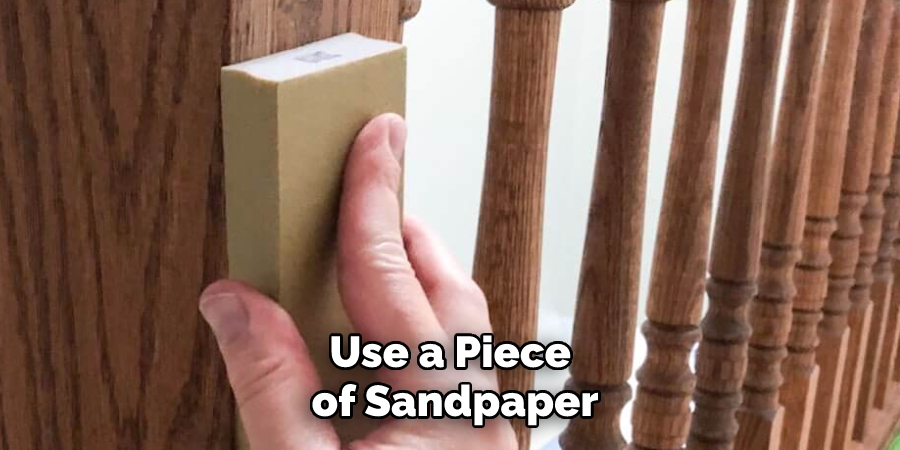
3. Apply Glue
Apply a generous amount of wood glue to the damaged area. Wood glue is a strong adhesive that will help all the pieces stay together when it dries, so make sure you cover every inch of the damaged area with glue.
4. Reassemble
It’s time to put the rail back together! Carefully place all the pieces into their original positions and press them firmly against the glue. Make sure you apply an even amount of pressure to ensure that all pieces are properly aligned.
5. Secure with Nails or Screws
Once your rail is reassembled, it’s important to secure it using nails or screws. This will help keep it from coming apart in case of any future trauma or stress.
6. Hammer in Nails
Using a hammer, carefully drive the nails or screws into the wood until they are flush with the surface. This will ensure that your rail is held together securely.
7. Check for Stability
Once all the nails and screws are secure, it’s important to check for stability. Make sure that all the pieces are firmly attached and that there is no movement or wobbling in the rail. If you find any, you may need to add more glue or nails/screws.
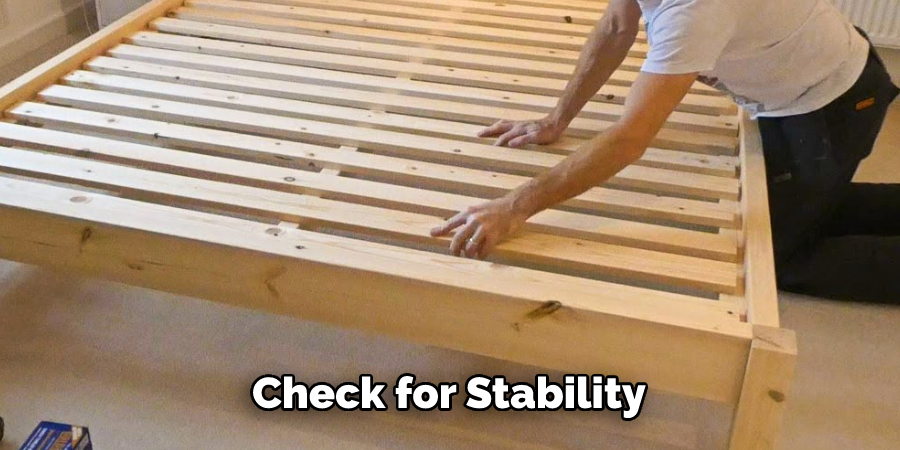
8. Finish with Sandpaper
Finally, use a piece of sandpaper to smooth out the surface of the rail and remove any excess glue. This will help your bed look its best and give it a finished professional appearance. Sanding will also help to further secure the repairs, making your bed more stable and durable.
And there you have it! With these 8 simple steps, you can easily fix a wooden bed frame rail in no time. So don’t worry if your bed’s frame rail has been damaged – just follow these instructions, and you’ll be back to comfortable sleeping in no time!
8 Maintenance Tips for Preventing Future Damage
1. Check for signs of wear, such as cracks or splits in the wood, which can be caused by weight or a poor-quality bed frame. If you notice any signs of wear, replace the frame.
2. Make sure that all screws and other fasteners are tight, as loose screws can cause wobbly bed frames or movement in the wood slats, leading to further damage. Future-proof by using lock washers or thread lockers to ensure that fasteners stay in place.
3. If you have a wooden bed frame, make sure it is not placed directly on the floor; use appropriate support legs and crossbars to reduce stress on the wood and minimize potential damage.
4. Consider replacing your current bed frame with a metal frame if you have an especially heavy mattress to put added stress on the wooden bed frame. The mattress should be placed on a flat and level surface.
5. Inspect the frame regularly for any signs of damage, such as loose wood, split beams, or broken supports; if you notice any of these signs, have them repaired right away to avoid further damage.

6. Move your bed periodically to prevent uneven wear in the wood slats or beams. The regular movement would not only reduce strain on the bed frame but also help you spot any potential problems before they get worse.
7. If your wooden bed frame is painted, make sure to keep it regularly repainted to protect it from moisture and other environmental factors that can cause damage and premature aging of the wood.
8. Use a vacuum cleaner or duster to clean your wooden bed frame regularly. This will prevent dust, dirt, and other debris from accumulating on the wood surface and potentially causing damage over time.
Follow these tips to help keep your wooden bed frame in good condition for years to come! With proper maintenance, a wooden bed frame can last for many years with minimal repair work. It’s always better to be proactive and take steps to prevent damage before it happens!
7 Safety Precautions to Take While Fixing a Wooden Bed Frame Rail
1. Always wear safety glasses when working with wood. Wood can splinter, so it’s important to protect your eyes by wearing a pair of protective eyewear. Protective eyewear also prevents sawdust and other debris from entering your eyes.
2. Use a face mask when sanding or sawing wood to prevent breathing in any particles created by the process. It will also help you avoid inhaling any allergens in the wood.
3. Wear work gloves to protect your hands from sharp objects and splinters while handling wood pieces. Gloves will also help you get a better grip on the pieces as you work.
4. Wear long sleeves and long pants to protect your skin from splinters and debris created by cutting or sanding wood. Long sleeves and pants will also help keep your skin from sticking to the wood pieces.
5. Make sure you have plenty of light and a steady surface to work on. Having too little light or an unsteady surface can cause accidents and is dangerous for both you and the wood pieces.
6. Keep children away from the area where you are working with wood. Children are naturally curious and may not understand the dangers of working with wood. That’s why it’s important to keep them out of the workspace.
7. Read and follow the manufacturer’s instructions carefully before attempting any repairs on a wooden bed frame rail. Not following directions could result in improper repair and cause further damage to the wood pieces. By taking these safety precautions, you can ensure your safety while fixing a wooden bed frame rail.
These steps will help you fix a wooden bed frame rail safely and correctly so that your bed can be structurally sound for years to come. With the proper safety measures in place, you can make sure all projects involving wood go smoothly and without incident.
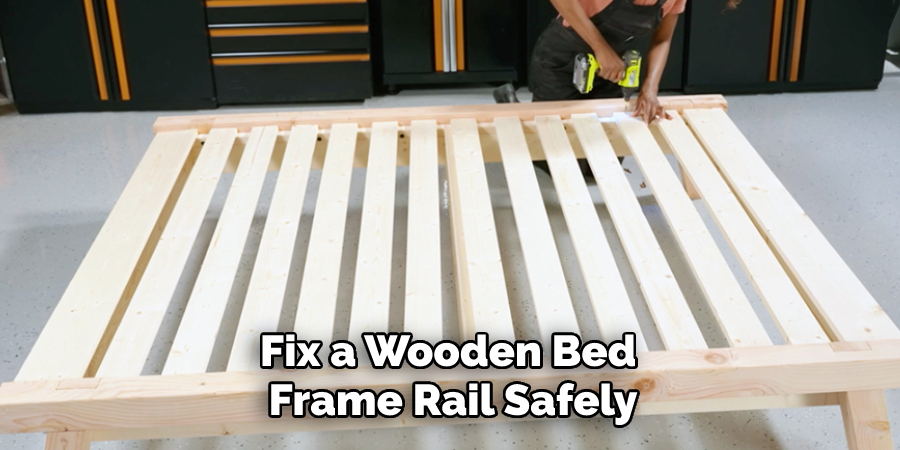
Conclusion
In conclusion, fixing a wooden bed frame rail doesn’t have to be difficult—there are a few easy steps you can take to get the job done. Start by examining what kind of damage the rail has sustained and assess your tools and supplies needs. Then, remove the sliding bracket, use flat objects to make space between the rail and slat, insert a piece of wood in between them, secure it with screws, and reattach the bracket.
With these simple steps on how to fix a wooden bed frame rail, you can mend your broken wooden bed frame rail and extend its life for many years to come. This is just one example of how making simple repairs to items around your home can save you money—and give your furniture an extended lifespan.
Don’t forget that doing regular maintenance on items like furniture rails not only helps them last longer but can also prevent serious injury if they’re not properly mended or replaced. Be sure to devote some time each month to these important upkeep tasks!

